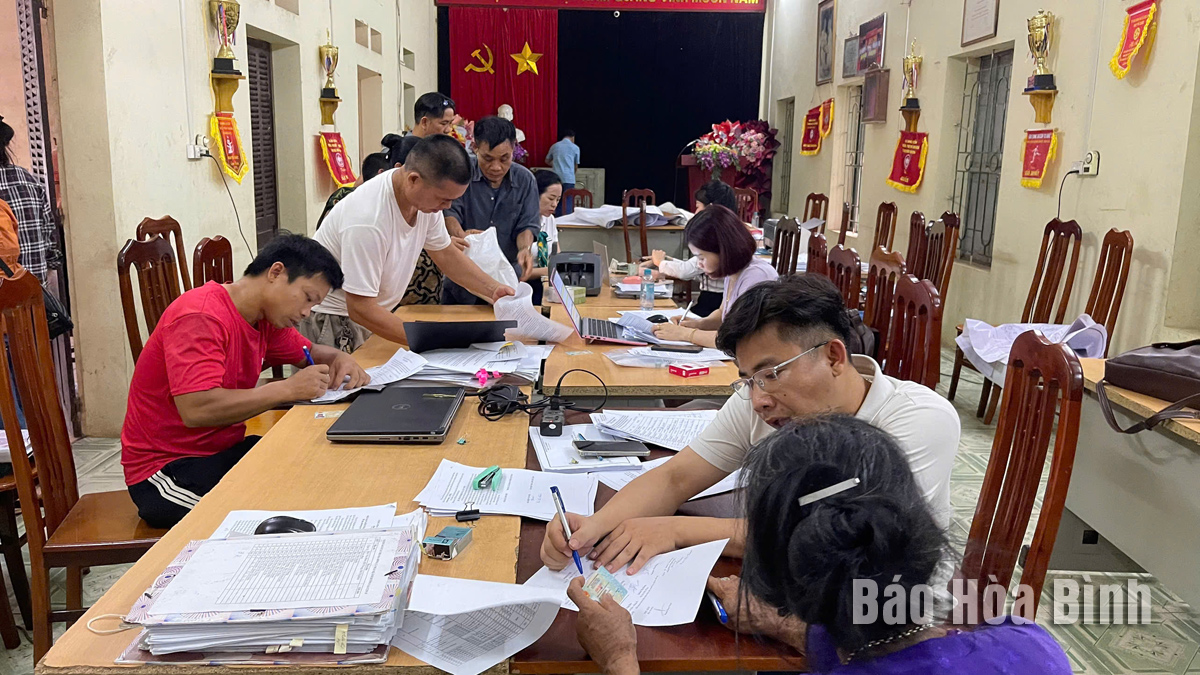



Kim Boi district is stepping up ground clearance for the Cuoi Ha eco-urban, entertainment complex and cable car system.
Kim Boi district is actively working with investors, particularly on land clearance, investment procedures, and resolving emerging issues. Kim Boi - Muong Dong, one of the province’s four major Muong cultural regions, is known for its pristine landscapes, poetic hills and rivers, and valuable hot spring resources. These natural advantages make it a prime location for eco-tourism development. Under the provincial development strategy, Kim Boi is designated as a future urban and eco-tourism hub.
Among the major projects drawing attention is the luxury eco-urban complex and cable car system in Cuoi Ha and Kim Boi communes, developed by Hoa Binh Sun Co., Ltd, a subsidiary of Sun Group. The project has a registered investment of approximately 6.65 trillion VND (254.76 million USD) and will accommodate a population of around 10,900 across 189 hectares in Kim Boi (109.5 ha) and Cuoi Ha (79.5 ha). The 4.4-kilometre cable car will include 17 pylons and link Kim Boi (Kim Boi district) to Quy Hoa (Lac Son district). With complementary urban and tourism projects underway in Quy Hoa, the development is expected to create new, high-quality tourism products and drive regional economic restructuring.
According to Bui Quang Hoa, Vice Chairman of the Kim Boi district People's Committee, the project faces a range of challenges including land-use conversions (especially forest and rice-farming land), concerns over compensation rates deemed low by residents, and sensitivities related to relocating ancestral graves. Administrative procedures, delays in funding for land clearance, and complex land ownership claims have further complicated progress.
In Coc Lam hamlet, Kim Boi commune – the planned site of the cable car terminal – nearly 51.25 hectares of farmland, or 90% of the hamlet’s agricultural land, will be reclaimed. With agriculture as the primary livelihood, fragmented land ownership, and some 300 graves requiring relocation, the clearance process has proven particularly difficult.
In response, the district has mobilised its entire political system, including party members and community leaders, to engage with and reassure residents. Public communication efforts and transparent procedures are being used to accelerate land clearance and relocation efforts. So far, land and asset surveys have been carried out with strong public participation.
The district is now advancing land recovery procedures, construction of resettlement zones, and compensation for affected residents. Projects include a new nursery school and rural residential areas. The investor is working with the Department of Construction to complete road connection agreements and technical design documents as part of the building permit process.
Of the approximately 130 hectares of agricultural land involved, around 104 hectares have already been publicly posted for clearance. Compensation plans for 11.31 hectares have been approved, with total payments amounting to 36.473 billion VND (approximately 1.4 million USD), of which 27.376 billion VND has been disbursed.
Regarding grave relocation, 582 graves are affected. The district has approved initial compensation for 448 graves, totalling 12.82 billion VND. To date, 121 graves have been relocated with 6.887 billion VND in compensation paid. The remaining 114 graves have approved relocation plans but are yet to be moved.
At the same time, construction has begun on resettlement zones in Yen and Coc Lam hamlets (around 7.06 hectares) for families whose land is being reclaimed. Land and asset surveys have also been completed for the planned rural residential zone in Cuoi Ha commune. The nursery school project in Cuoi Ha has finalised all land and construction procedures. All preparatory work for the eco-urban and cable car complex is on track for official ground-breaking in mid-June 2025.
In addition, Kim Boi district has largely completed land handover for a regional link road project, with construction expected to finish and the route operational by 2026.
The investment climate in Kim Boi is improving steadily, underpinned by zoning, sectoral, and master plans that unlock major opportunities for development. The district is positioning itself as a "peaceful and high-quality destination,” aligned with a strategic vision of becoming an area with a clean, biodiverse environment, high-quality agricultural products, and a rich cultural identity rooted in Muong heritage.
To achieve this, the district is stepping up collaboration with provincial departments and agencies to implement practical measures aimed at improving the investment environment and attracting strategic investment projects. Key focus areas include urban development, tourism, services, and the sustainable use of natural resources such as mineral water and natural landscapes.